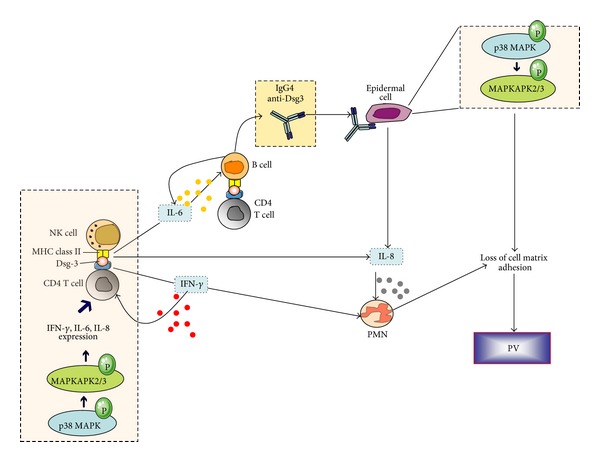Figure 2.

Schematic representation of the suggested interplay between natural killer (NK), CD4+ T, B cells, and polymorphonuclear cells (PMN) during pemphigus pathogenesis [22]. NK cells accumulate from the bloodstream to the epidermis and act as antigen-presenting cells by introducing desmoglein (Dsg3) peptides to CD4+ T cells. p38 MAPK phosphorylation within lymphoid subpopulations such as NK and CD4+ T cells induces expression of IFN-γ, IL-6, and IL-8 that amplify the inflammatory response, MHC-II presentation, and autoantibody production by B cells. The activated T cells further enhance B-cell anti-Dsg3 secretion and presentation to epidermal cells. Anti-Dsg3 activates the p38 MAPK pathway within keratinocytes leading to MAPK-activated protein kinase 2 (MK-2) mediated heat shock protein 27 (Hsp27) phosphorylation, actin microfilament reorganization, and acantholysis.
